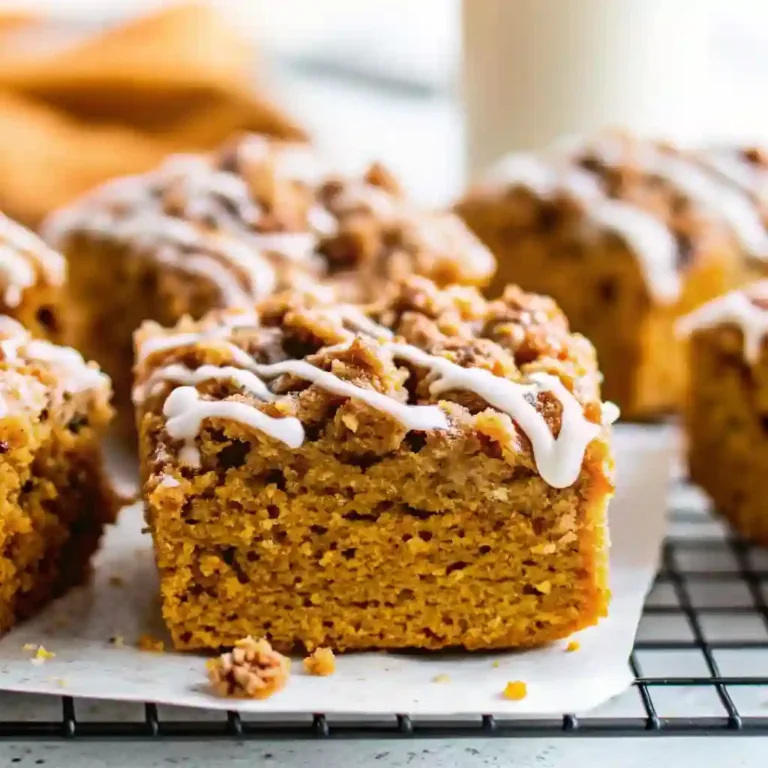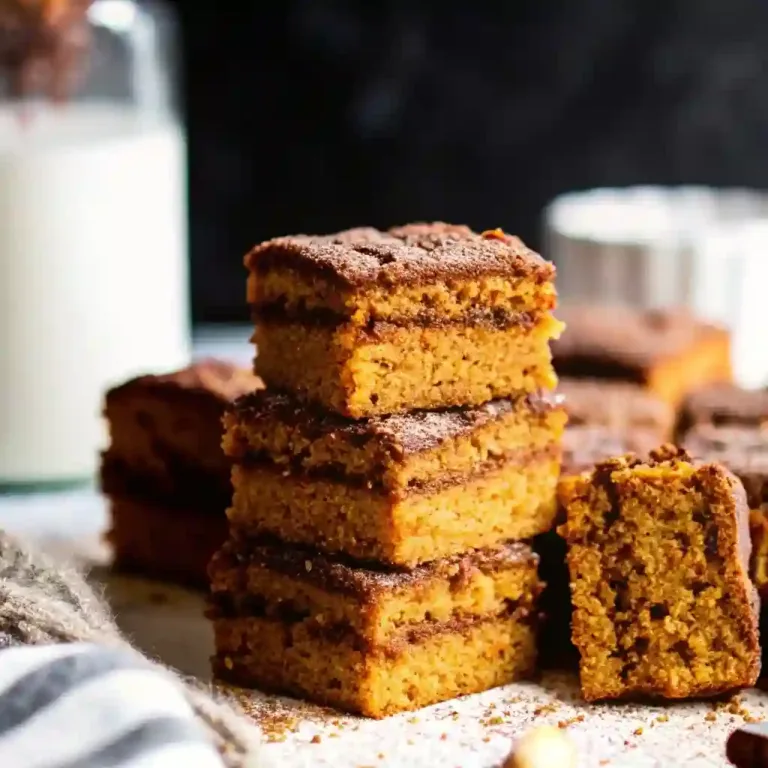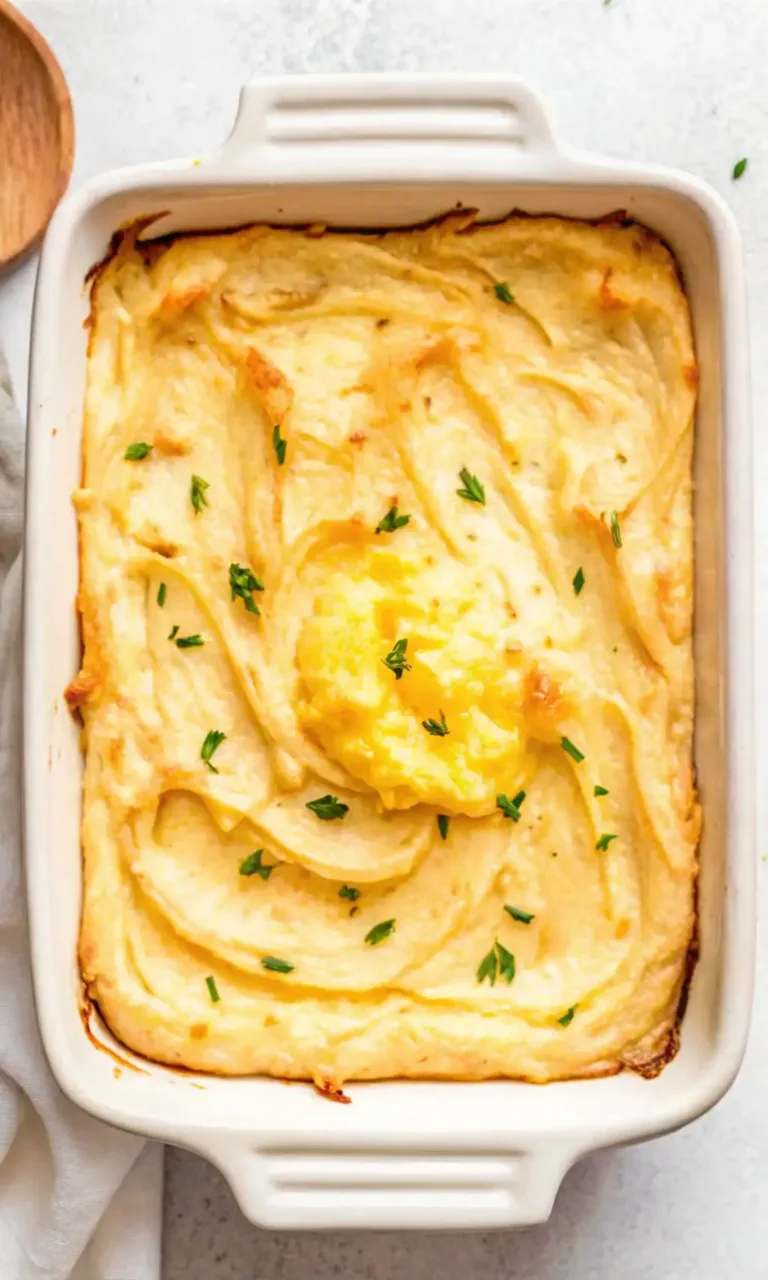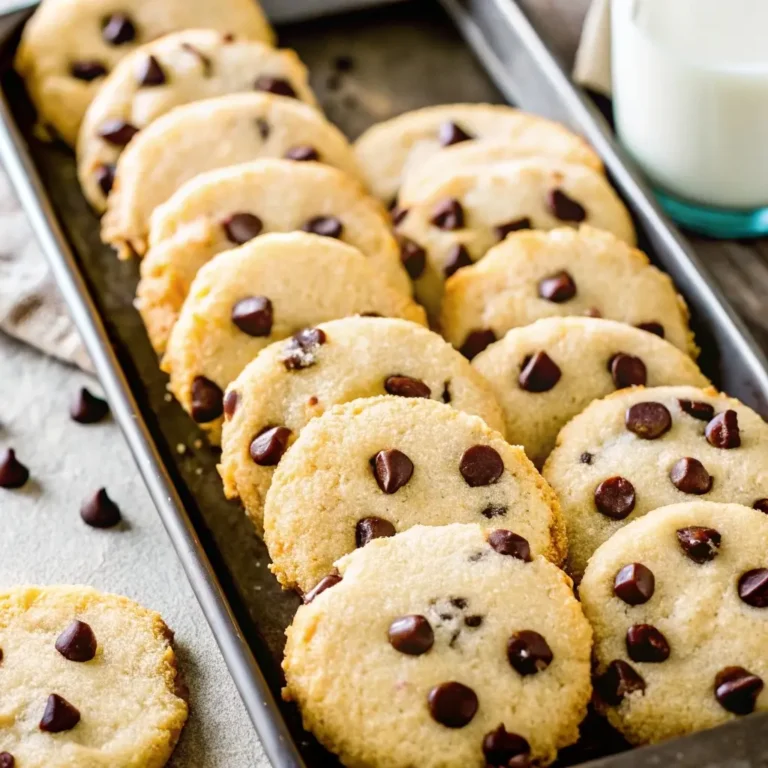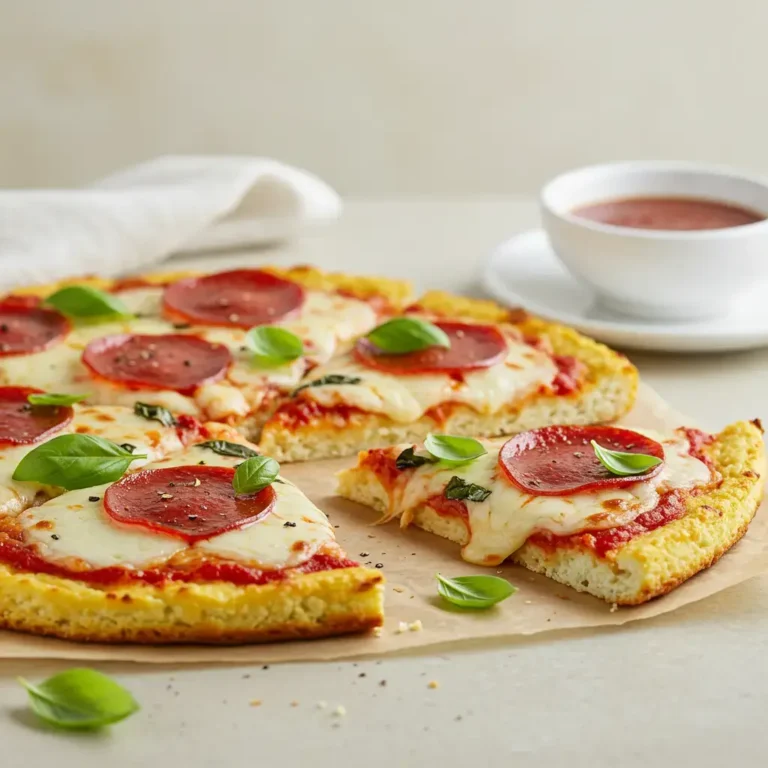The Ultimate Pangrattato Recipe (Crispy Italian Breadcrumbs)
There are few kitchen sounds more satisfying than the sizzle of breadcrumbs toasting in garlicky olive oil. That sound is the promise of Pangrattato, the humble Italian secret that transforms any meal with a magical, crunchy finish. Born from the resourcefulness of the ‘cucina povera‘ and known as “poor man’s parmesan,” this simple topping can elevate pasta, salads, soups, and more into something truly special.
This is the only guide you’ll ever need. Inside, you’ll find a foolproof ten-minute recipe, pro tips for perfect texture, and creative variations to make every batch your own.

The Ultimate Pangrattato Recipe
Ingredients
Method
- 1. Cut stale bread into chunks and pulse in a food processor until coarse crumbs form.
- 2. Heat olive oil in a large pan over medium-low heat. Add whole garlic cloves and cook until fragrant, then remove garlic before browning.
- 3. Add breadcrumbs to the pan, stirring to coat in the garlic oil.
- 4. Cook, stirring often, until golden brown and crispy.
- 5. Remove from heat and stir in parsley, cheese, or other flavorings of choice.
- 6. Spread pangrattato on a plate to cool completely before storing.
Nutrition
Notes
Tried this recipe?
Let us know how it was!Table of Contents
Table of Contents
Why This is the Definitive Recipe
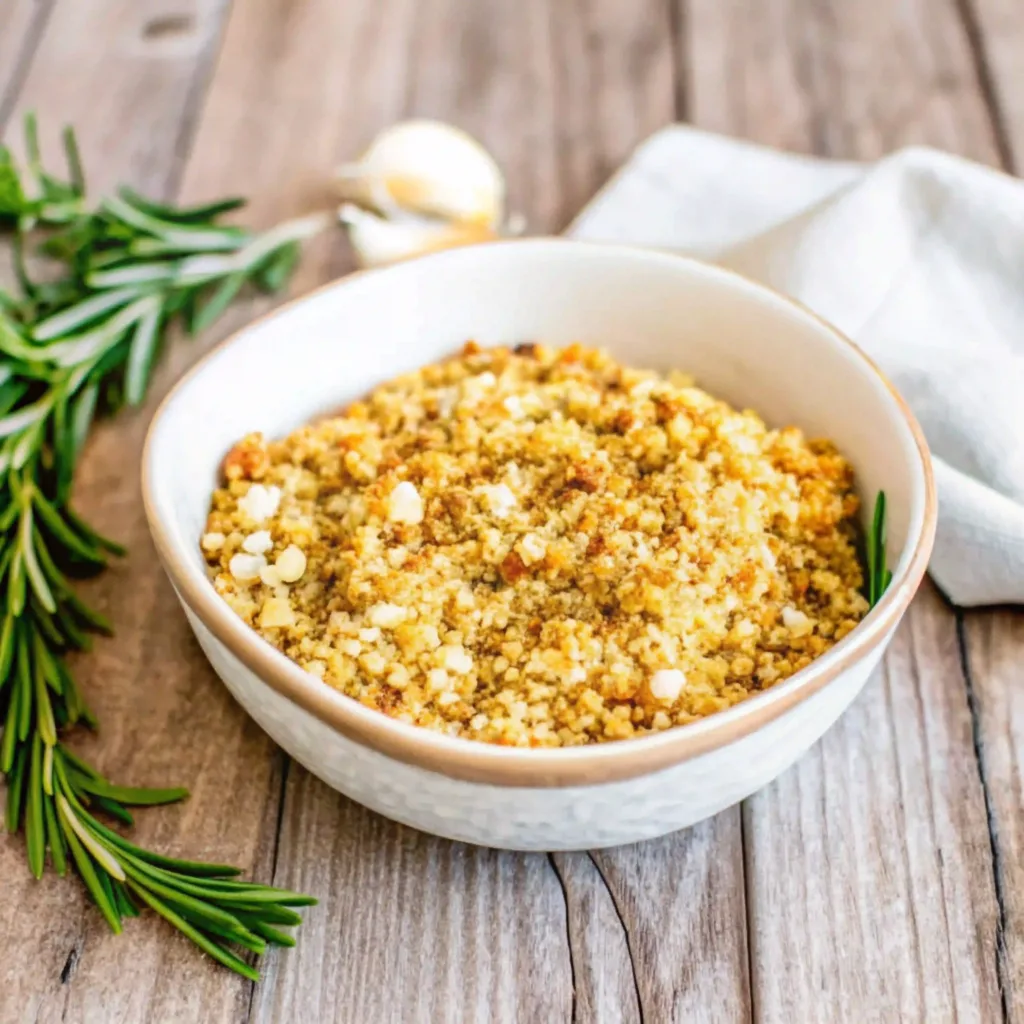
- Unbeatable Flavor and Texture: Achieve the perfect golden crunch with a rich, garlicky taste in every bite.
- Ready in 10 Minutes: Ideal for quick weeknight meals without sacrificing quality.
- No More Food Waste: The smartest way to use up stale bread and turn it into something delicious.
- Completely Customizable: Easily adapt the recipe to be spicy, cheesy, or fresh with citrus.
- Foolproof Video Guide: Follow along visually to master the process and get consistent results every time.
The 4 Key Ingredients (And Why They Matter)
The Bread: Stale, Not Fresh
Stale bread has lower moisture content, which helps it toast evenly and become extra crispy. Fresh bread tends to steam instead of crisping, so it is best to let bread sit out for a day or two before using. Sourdough and ciabatta are excellent choices for their texture and flavor. Gluten-free bread can also be used if prepared in the same way.
The Oil: Extra Virgin Olive Oil
A good quality olive oil adds depth and richness to pangrattato. Since the oil is a main flavor component, its freshness and quality will shine through in the final result.
The Garlic: Whole Cloves for Infusion
Infusing the oil with whole garlic cloves allows the flavor to develop gently. This method gives a sweet, mellow garlic taste without the bitterness that comes from burning minced garlic.
The Flavorings: Cheese and Fresh Herbs
Cheese such as Parmigiano Reggiano or Pecorino Romano, along with fresh herbs like parsley or thyme, should be added after cooking. This prevents clumping and keeps herbs vibrant and aromatic.
Ingredients You’ll Need
This is what you’ll need for a classic batch of pangrattato. This recipe is easily scaled up or down, and the exact measurements are in the printable recipe card at the bottom of this post.
- Stale Bread: Sourdough, ciabatta, or another rustic loaf works best.
- Extra Virgin Olive Oil: Use a good quality oil, as its flavor will shine through.
- Whole Garlic Cloves: For gently infusing the oil.
- Fine Sea Salt: To season and enhance all the flavors.
- Fresh Parsley: For a bright, fresh finish.
Optional for Variations:
- Parmigiano Reggiano Cheese: For a savory, cheesy flavor.
- Red Pepper Flakes: To add a touch of spicy heat.
How to Make Pangrattato (Step-by-Step)
- Prepare the bread
Cut your stale bread into chunks and place them in a food processor. Pulse until you have coarse crumbs. Avoid overprocessing so the texture remains varied.
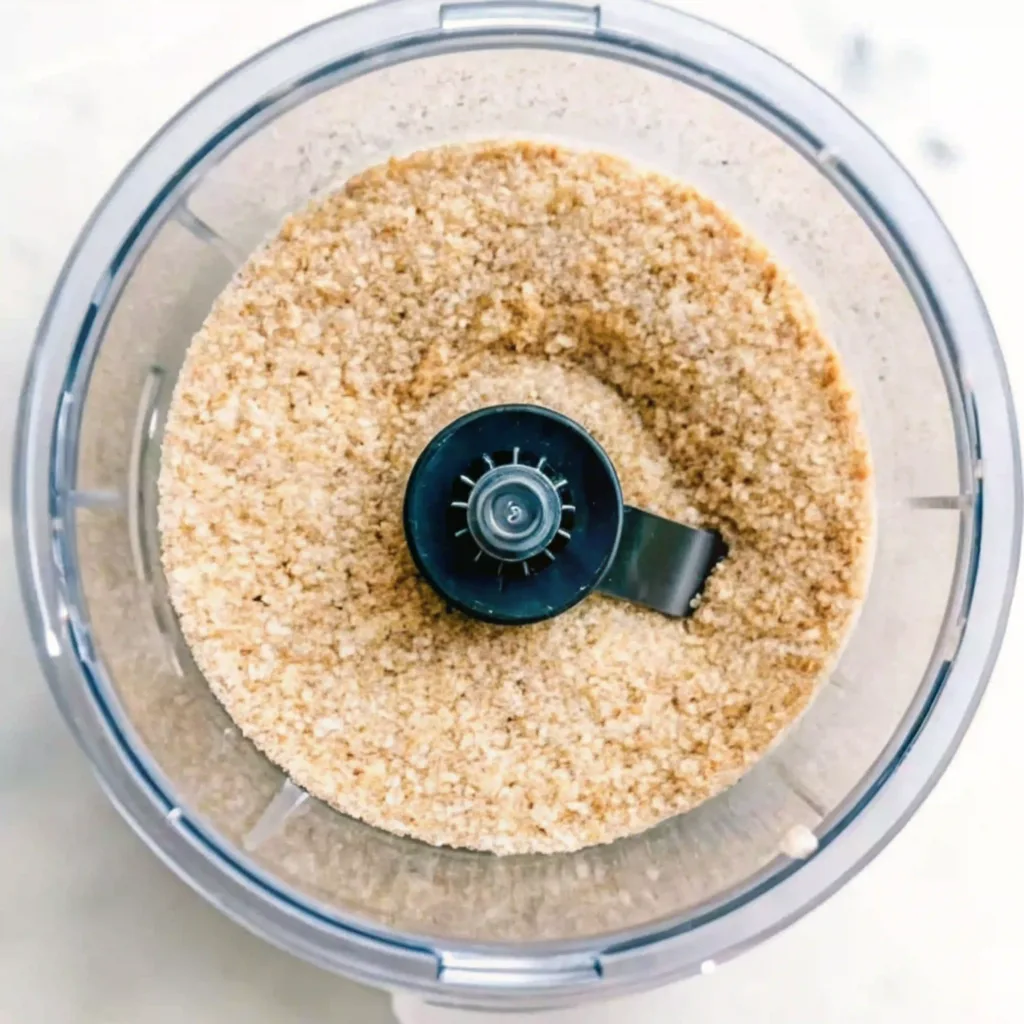
- Infuse the oil
Pour extra virgin olive oil into a large frying pan. Add whole garlic cloves and heat gently until the oil becomes fragrant. Remove the cloves before they brown to prevent bitterness.
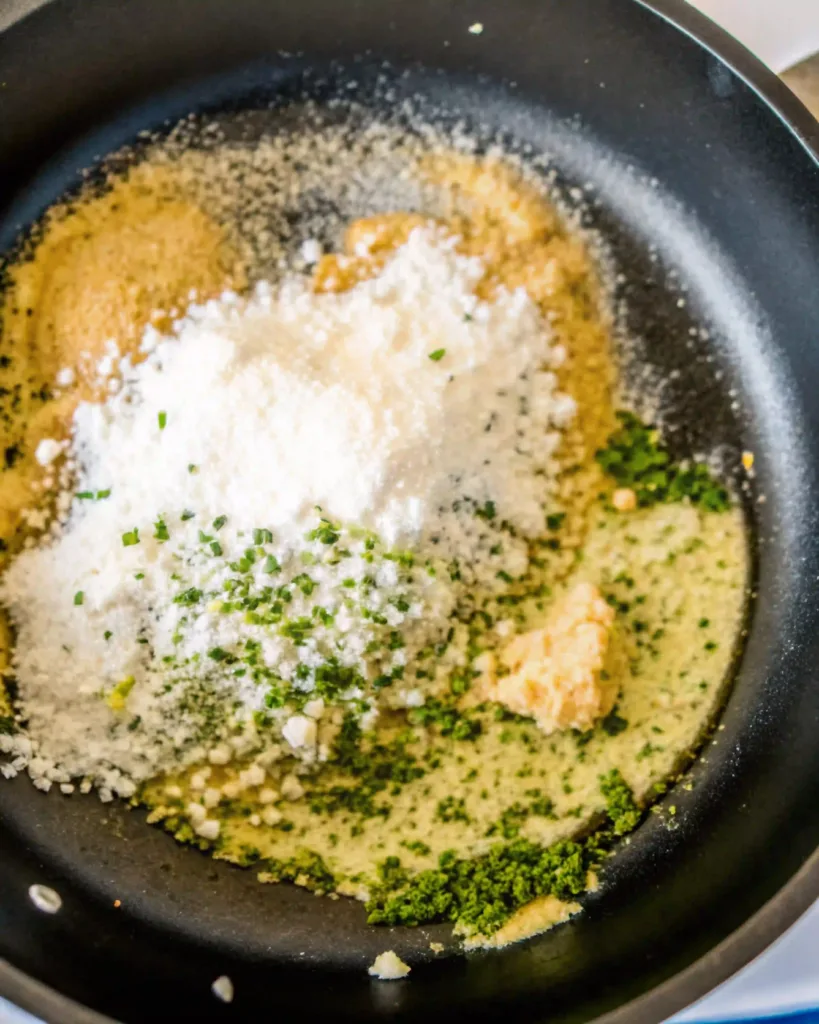
- Toast the crumbs
Add the breadcrumbs to the pan and stir well so they are coated in the garlic-infused oil. Cook over medium-low heat, stirring often, until the crumbs turn golden and crispy.
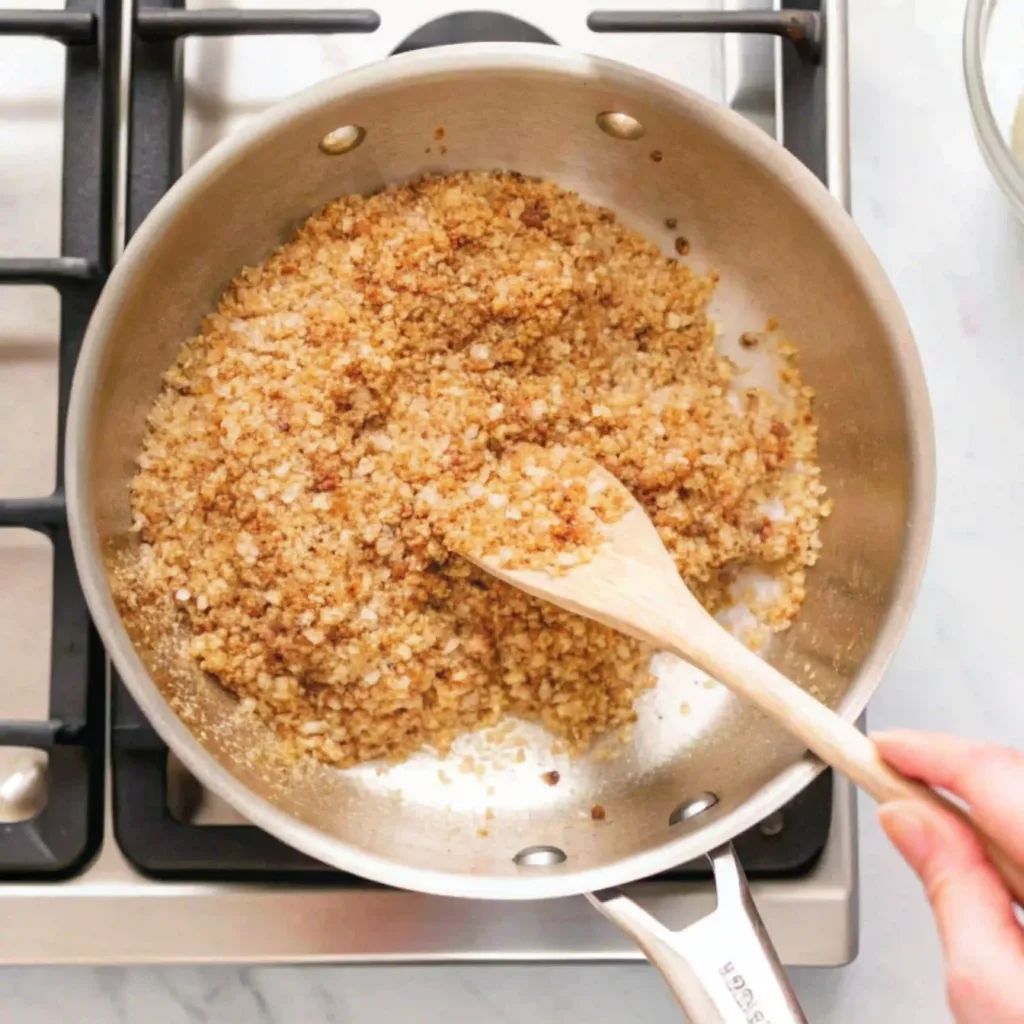
- Add final flavorings
Once the crumbs are toasted, remove the pan from the heat. Stir in fresh herbs, grated cheese, or other additions according to your chosen variation.
- Cool and store
Spread the pangrattato on a plate or tray to cool completely before storing. This stops the cooking process and keeps the texture light and crisp.
The Ultimate Pangrattato Variations Guide
| Flavor Profile | Key Ingredients | How to Add Them | Best For… |
| The Classic | Garlic and parsley | Stir parsley in after toasting | Pasta, risotto, soups |
| Spicy Kick | Chili flakes | Add with breadcrumbs during toasting | Aglio e olio, roasted vegetables |
| Umami Bomb | Anchovy fillets | Melt anchovies in oil before adding breadcrumbs | Pasta with greens, grilled fish |
| Citrus Burst | Lemon zest | Mix zest in after cooking | Salads, seafood dishes |
| Cheesy and Savory | Parmigiano Reggiano | Add grated cheese after removing from heat | Pasta, roasted cauliflower |
| Nutty Crunch | Toasted pine nuts or almonds | Stir nuts in after toasting breadcrumbs | Salads, vegetable sides |
Troubleshooting and Pro Tips for Perfection
Achieve perfect pangrattato every time with these essential tips and solutions to common problems.
Pro Tips
- Use a heavy-bottomed pan for steady, even heat that prevents hot spots.
- Keep the heat at a gentle level (medium-low) to toast the crumbs golden brown, not burn them.
- Transfer the pangrattato to a plate right after cooking. The residual heat in the pan will continue to cook them, so removing them immediately prevents over-browning.
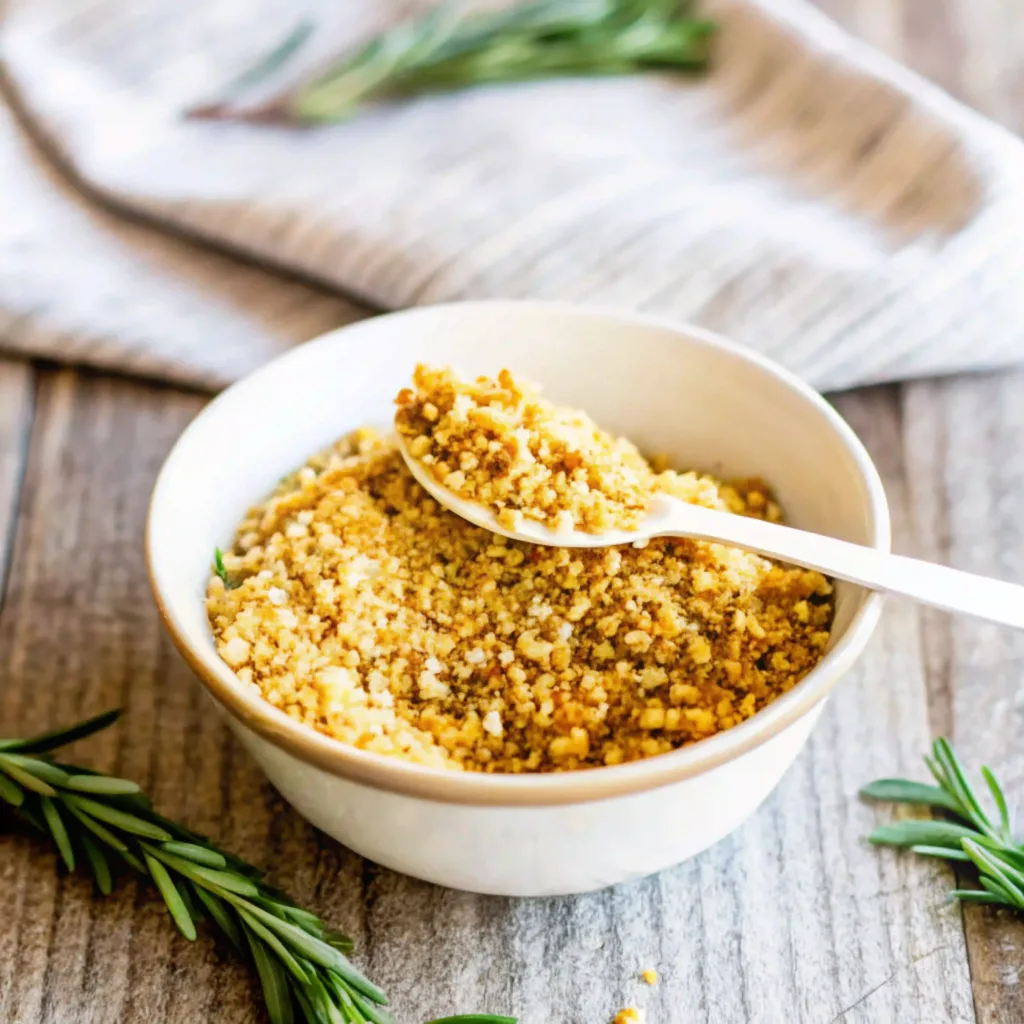
Troubleshooting Common Issues
- Problem: My Pangrattato Burned.
- Solution: The heat was too high. Pangrattato needs constant attention and gentle heat. Stir constantly, and if you see dark, bitter spots forming, it’s best to start over.
- Problem: My Pangrattato is Soggy or Clumpy.
- Solution: This usually has two causes. First, your bread might have been too fresh and contained too much moisture. Second, cheese was likely added while the pan was still on the stove, causing it to melt and clump instead of mixing in. Ensure your bread is properly stale and always add cheese off the heat.
- Problem: Can I use fresh bread?
- Solution: While you can, it’s not recommended for the best texture. Fresh bread holds more moisture and tends to steam in the pan, making it difficult to achieve a light, crispy finish. For truly excellent pangrattato, stale bread is always the better choice.
- Solution: While you can, it’s not recommended for the best texture. Fresh bread holds more moisture and tends to steam in the pan, making it difficult to achieve a light, crispy finish. For truly excellent pangrattato, stale bread is always the better choice.
How to Use and Serve Pangrattato
Pangrattato is a versatile topping that can bring texture and flavor to many dishes. Here are some classic and creative ways to enjoy it.
- Pasta: Perfect for aglio e olio, broccoli pasta, or creamy sauces where the crunch adds contrast.
Pangrattato also makes a perfect topping for summer pasta dishes, like this refreshing corn pasta salad where the crunch contrasts the creamy dressing. - Risotto: Sprinkle over mushroom or lemon risotto for extra depth.
- Soups: Add a handful to tomato or vegetable soup for a rustic finish.
- Salads: Use instead of croutons for a lighter, flavorful crunch.
- Roasted Vegetables: Ideal for topping roasted broccoli, cauliflower, or carrots.
- Fish: Scatter over baked or grilled fish for a savory crust.
It’s equally at home on seafood — try scattering over grilled salmon to give each bite a savory crunch. - Chicken: Use as a garnish on roasted or pan-seared chicken for added texture.
For chicken, try scattering pangrattato over something like this garlic butter mushroom stuffed chicken to add a crispy, aromatic finish.
Storage and Freezing Instructions
Storing
Place the cooled pangrattato in an airtight container. For versions without cheese, keep it at room temperature for up to two weeks. If cheese is included, store it in the refrigerator and use within one week.
Freezing
Pangrattato can be frozen in a sealed container. It will keep its flavor and crunch for up to three months. When ready to use, let it thaw at room temperature and give it a quick re-toast in a dry pan if needed.
Helpful Notes
- For extra flavor, try combining different herbs such as parsley, thyme, and rosemary.
- A mix of olive oil and a small amount of butter can create a richer taste.
- If you prefer a lighter texture, pulse the bread less in the food processor to leave some larger crumbs.
- Pangrattato works well as a make-ahead garnish for dinner parties since it keeps well in storage.
- For a vegan option, replace cheese with nutritional yeast for a similar savory depth.
Conclusion
Pangrattato is a simple yet powerful way to bring flavor, crunch, and personality to your cooking. With just a few ingredients and ten minutes of your time, you can create a topping that transforms everyday meals into something special. It is budget-friendly, reduces food waste, and offers endless room for creativity through variations like spicy, cheesy, or citrus-infused versions.
Now that you have the ultimate guide, the only question left is how you’ll make it your own. Will you go for the savory Umami Bomb on your next fish dish, or the bright Citrus Burst to liven up a salad?
Drop a comment below and let us know your favorite way to use pangrattato! And if you loved the recipe, please consider leaving a star rating and sharing it on Pinterest so others can discover the magic of this crunchy topping too.
Frequently Asked Questions
What is pangrattato made of?
Pangrattato is made from stale bread crumbs toasted in olive oil, often with garlic, herbs, and sometimes cheese or other flavorings.
What is pangrattato used for?
It is used as a crunchy topping for pasta, risotto, soups, salads, roasted vegetables, fish, and chicken to add flavor and texture.
How long can you keep pangrattato?
Without cheese, it can be stored at room temperature in an airtight container for up to two weeks. With cheese, refrigerate and use within one week. For longer storage, it can be frozen for up to three months.
What’s the difference between pangrattato and panko?
Pangrattato is an Italian topping made from stale bread, pan-fried with oil and aromatics for a rustic, flavorful crunch. Panko is a Japanese-style breadcrumb made from crustless bread that is baked, resulting in a lighter, flakier, and more delicate texture.



